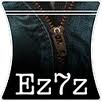| 我们致力本地化我们在尽可能多的语言的网站越好,然而这一页是机器使用谷歌翻译翻译。 | 关闭 |
-
-
产品
-
资源
-
支持
-
公司
-
登录
-
.par2 文件扩展名
开发商: Parchive文件类型: Parchive 2 Index File你在这里因为你有,有一个文件扩展名结尾的文件 .par2. 文件与文件扩展名 .par2 只能通过特定的应用程序推出。这有可能是 .par2 文件是数据文件,而不是文件或媒体,这意味着他们并不是在所有观看。什么是一 .par2 文件?
存储在所述PAR2格式文件被分类为包含一个或多个文件和已存档的PAR2文件的作者甚至文件夹的压缩文件。这些文件都贴有.par2延伸,并且可以通过访问被集成到Parchive软件文件压缩特征来创建。此应用程序的文件压缩功能也实现与功能,用于自动检查存储在一个文件中的数据的稳定性,甚至可以实现其可以解决它的文件的内容中检测到的错误的解决方案。该Parchive软件中嵌入了微软的Windows广泛使用的版本支持,用户需要先安装这个软件到他们的系统,以整合这些PAR2文件的支持。如何打开 .par2 文件?
推出 .par2 文件,或者你的电脑上的任何其他文件,双击它。如果你的文件关联的设置是否正确,这意味着应用程序来打开你的 .par2 文件将其打开。这是可能的,你可能需要下载或购买正确的应用程序。这也有可能是你有正确的应用程序在PC上,但 .par2 文件还没有与它相关联。在这种情况下,当您尝试打开一个 .par2 文件,你可以告诉Windows的应用程序是正确的该文件。从这时起,打开 .par2 文件将打开正确的应用程序。 点击这里修复.par2文件关联错误打开一个应用程序 .par2 文件
 parchive
parchiveparchive
Parchive is known as an erasure code system that is mainly associated with PAR files. It uses the parity file format, the format that is responsible for checksum verification performance as well as perform corrupted and missing data repair. Since Parchive is an erasure code system, it specializes in correcting errors and it is originally created for the solving of problems related to the reliable transfer of Usenet files. But these days, Parchive is already used to protect all types of data problems such as data corruption, damage and bit rot whether they are Usenet files or not. Parchive comes with a variety of versions already such as the PAR versions 1, 2, and 3. These versions differ from each other though especially versions 1 and 2 as well as the PAR 3 version also won’t be able to access applications for PAR. This is why even if Parchive is associated with PAR files, these PAR files are PAR2, PAR3, etc. files and they correspond to each of the different Parchive version that created the file. EZ7z
EZ7zEZ7z
Ez7z is a user interface for p7zip, an archiver used as a compression tool for Mac. It allows decompression of files such as zip, rar, tar, gz, 7z, bzip2, while you compress into zip, tar, bzip2, 7z, gz and bzip2. You can preview archive contents and delete files without having to open the archive, and for processing of multiple files. You can also create, repair and verify PAR2 files. Using Ez7z interface, you can perform drag-and-drop, and select the work you need by clicking one of the following functions: Shrink, Delete, View, Expand or PAR2. You can also set our preferences such as your default archiver, do multi-threading and designate where you want to save your files. PAR2 [Parchive 2 Index File] is a project intended to provided data recovery for programs to be able to verify and retrieve missing parts from a set of data. It extends the potential capabilities of PAR, therefore PAR2 is an improvement of PAR1. Unlike PAR1, PAR2 can repair damaged files. It does not require all PAR files to be of equal size and to obtain largest source file to recover a small-sized data file. With PAR2, you don’t need to split files into many pieces to achieve the protection you desire. PAR2 can handle 32,768 files while PAR1 can only handle 255. QuickPar
QuickParQuickPar
QuickPar was created for windows operating systems, but there are later versions that can also be use in Linux platforms, though the WINE (Windows Emulator) software needs to be available in the system. Quickpar was developed by Peter Clements in 2003 to provide users with the ability to make "parchives" in order to recover information from damage files or group of files. This is helpful in restoring those damaged and corrupted files. In addition, it can locate missing files. This software is integrated with an algorithm called RS (Reed-Solomon) error correction. Thru this, QuickPar can implement comprehensive restoration functionalities by producing adequate parity volumes. It can be use and downloaded for free, though it is not an open source application. The users’ windows operating system should include Quickpar in the "allowable" programs without restrictions, in order to fully enable its wide range of features developed for reconstructing damaged files in the system. There are times that the Windows system might stop its functions, especially when Quickpar allocates large bundles of files. The users’ system must have enough data storage space to avoid slowdowns or freezes after using Quickpar.提醒一句
要小心,不要重命名扩展 .par2 文件,或任何其他文件。这不会更改文件类型。只有特殊的转换软件可以从一个文件类型更改一个文件到另一个。什么是文件扩展名?
文件扩展名是一组三个或四个字符在文件名的末尾,在这种情况下, .par2. 文件扩展名告诉你它是什么类型的文件,并告诉Windows哪些程序可以打开它。窗户经常关联一个默认程序的每个文件的扩展名,这样,当你双击该文件,程序会自动启动。当该程序不再是您的PC上,有时可以得到一个错误,当您试图打开相关的文件。发表评论

